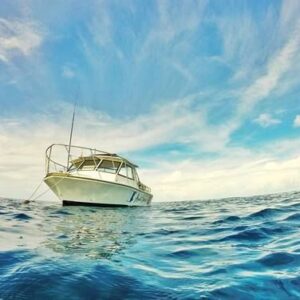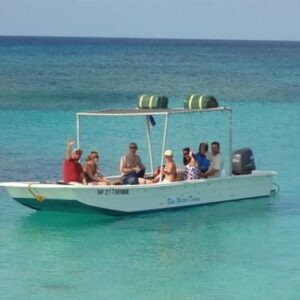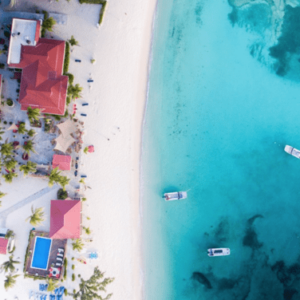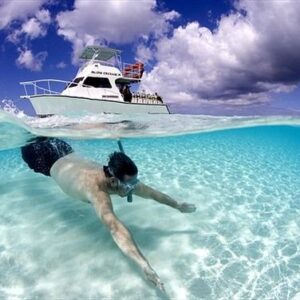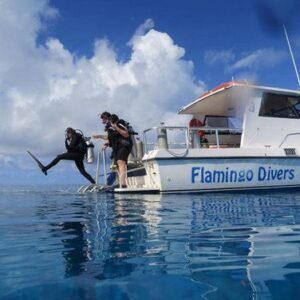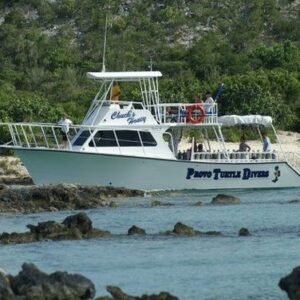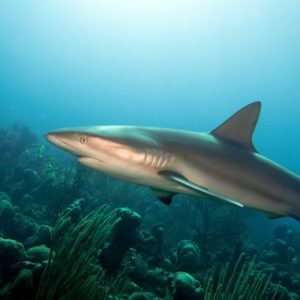GETTING THERE
-
Turks & Caicos is a British Overseas Territory, meaning U.S. citizens require a passport to travel there. See TSA requirements for the most up to date information.
-
There are two international airports in Turks and Caicos: Providenciales International Airport (PLS) and Grand Turk JAGS McCartney International Airport (GDT). For trips to the other islands, you can charter a boat or go with an operator.
-
The best way to get around any Turks and Caicos Island is by car—either a rental from the airport or a taxi. (Currently, there are no Ubers or Lyfts available and no public transportation.)
GOOD TO KNOW
-
Turks & Caicos is a British Overseas territory.
-
Time zone: Eastern Daylight Time.
-
Primary languages: English, Turks and Caicos Islands Creole and Spanish.
-
Currency: U.S. dollar. Credit cards are readily accepted but keep cash on hand for the can’t-miss food stalls.
-
Phone and internet: Phone service is available from most U.S. phone carriers (you may need to activate international roaming). Internet is readily available including Wi-Fi at hotels and restaurants. The international calling code is +1 (649).
-
Voltage: 120 (same as the U.S. and Canada).
-
Hurricane season runs from June to November in Turks & Caicos.
-
There are currently no travel health and safety notices currently in effect for Turks & Caicos.
DIVE CONDITIONS
- Water temperatures range from 74—78 degrees Fahrenheit in winter to 82—84 degrees in summer.
- Average water visibility is 60 to 100 feet but can be higher or lower depending on the weather.
WHEN TO GO
- Turks & Caicos offers great diving conditions all year round.
- The best time for whale watching is late December to March.
- The peak season for tourism is December to April.
WHAT YOU’LL SEE
-
Turks and Caicos boasts an abundance of marine life including larger mammals (like Caribbean reef sharks and migrating humpback whales) and spectacular reef fish (think: stoplight parrotfish, angelfish, snappers, groupers and more). And let’s not forget about JoJo the dolphin—a wild Atlantic bottlenose dolphin that can frequently be spotted splashing around Grace Bay. The largely unspoiled coral reef and sponge formations are a diver’s playground.
BEST SCUBA DIVING SITES IN TURKS & CAICOS
GRACE BAY
With its porcelain-white sands and lapping aquamarine waters, Grace Bay beach on the north side of Provo is the ultimate vacation paradise. Protected by a large barrier reef, there’s no shortage of spectacular marine life. With a range of depths (30 feet to 100 feet), there’s a site for every experience level and divers can expect to bump into groupers, barracuda, reef sharks and sea turtles swimming among the colorful coral.
FRENCH CAY
Approximately 18 miles south of Providenciales, you’ll find this small low lying island with fantastic dive sites for all levels. From January to March, migrating humpback whales pass through but the main draw here for divers is the many different types of sharks patrolling the waters. During the June and July mating season, nurse sharks congregate on the sheltered side of the island, but you can also spot grey reef, nurse, hammerhead, bull and tiger sharks at other times.
NORTH WEST POINT
For experienced divers, this wall just off Provo that starts at 35 feet and drops to more than 3000 feet offers exciting viewing experiences. Barracuda, jackfish, angel fish, lobsters and crabs can be found among the hard and soft corals.
WEST CAICOS
Located 10 miles southwest of Provo is this uninhabited island with multiple great diving sites along a six-mile long wall. With depths up to 45-feet, diving here is suitable for all experience levels. Sharks, rays, turtles and smaller fish like blue tangs and grunts can all be spotted among the barrel sponges, staghorn and elkhorn coral.
BEST SNORKELING IN TURKS & CAICOS
THE BIGHT REEF (PROVIDENCIALES)
Easily accessible from the beach, this popular snorkeling spot (also known as Coral Gardens) extends to a depth of about 20 feet towards the outer edge of the reef and is particularly good for novices. Expect to see green turtles and hawksbill turtles as well as stingrays plus a variety of colorful Caribbean fish (including groupers, parrotfish, trunkfish, goatfish, porcupinefish and angelfish) floating around the hard and soft corals.
SMITH’S REEF (PROVIDENCIALES)
Located near Turtle Cove on the north coast of Provo lies this spectacular snorkeling site for all levels that offers multiple reefs systems and coral heads with high visibility. Here you’ll find a myriad of hard and soft corals, sea fans and sponges. Glide around with turtles, stingrays and the impressive spotted eagle rays. Colorful fish abound and hiding under the ledges, you’ll see lobsters, shrimp, crab and eels.
SALT CAY (GRAND TURK)
There are beautiful spots to be checked out here from the beach and shore but to explore even more gorgeous sites, hop on a snorkeling boat cruise. Snorkel here during late December through April and you may even enjoy the company of migrating humpback whales.
DISCOVER UNIQUE THINGS TO DO IN TURKS & CAICOS
THE TURKS & CAICOS NATIONAL MUSEUM
Located in Cockburn Town on Grand Turk, this museum may be small but it does an excellent job of showcasing the island’s natural history as well educating visitors about the lives of its former slaves and local shipwrecks.
TUCK INTO A LOCAL FISH FRY
Head to the island of Providenciales on a Thursday night for Bright Children’s Park famous fish fry, popular with tourists and locals alike. Enjoy barbecued fish from dozens of stalls, live music, dancing, market stalls and lively atmosphere.
LITTLE WATER CAY
Also known as Iguana Island, this tranquil spot is home to the endangered Rock Iguanas. Reach the island by boat or rent a kayak from the Leeward Marina area on Providenciales.

